Building and living with the Shea Tree, a 200 year long
relationship.
|
|
| |
|
|
|
Select 1 to 6 earthen homes...
 |
|
|
|
|
| |
|
These are the earthen homes of the Gurunsi in
Burkina Faso. The men build them and the women decorate the
facades with waterproof clay plasters in patterns, all of which have a symbolic meaning.
The small round houses, called 'dra', belong to young singles while the rectangular
'mangolo' with a terrace belong to young couples.
|
|
|
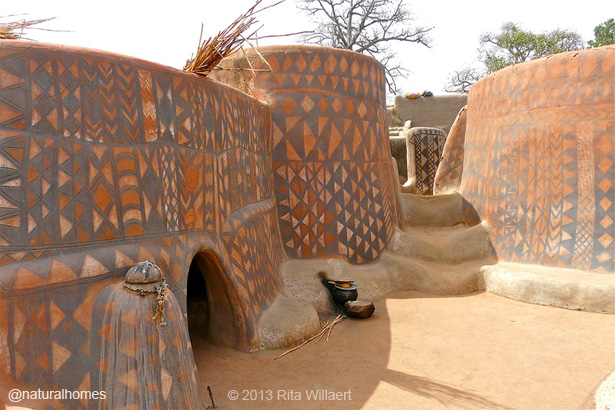 |
|
| |
|
|
|
|
The 'bilobées'
belong to the older women and young children. You can watch a
video (below) of a Gurunsi woman mixing, plastering and decorating her home.
The water used in the preparation of shea butter, which ends up
with an oily texture, helps to make the plaster water-proof. |
|
| |
|
|
|
| |
|
|
|
| |
|
|
|
| |
Gurunsi woman painting her house, Burkina Faso |
|
The Shea tree, as well as providing food, is used by the
Gurunsi for treating jaundice and diarrhoea. The flowers are
edible and the bark of the tree is used to treat gastric pain.
It takes about 15 years before a tree begins to fruit and about
25 years before it is fully mature after which it will produce
fruit for about the next 200 years. The shea fruit is a thin
nutritious pulp around a large, oil-rich kernel which is used to
make shea butter. The fruit is tasty and rich in vitamins and
antioxidants.
|
|
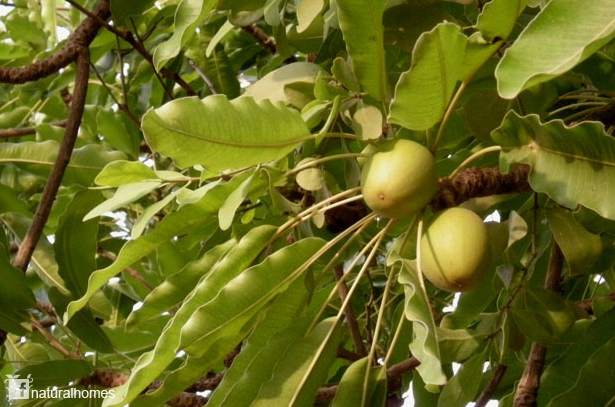 |
|
| |
|
|
|
|
|
|
|
|
 |
|
|
|
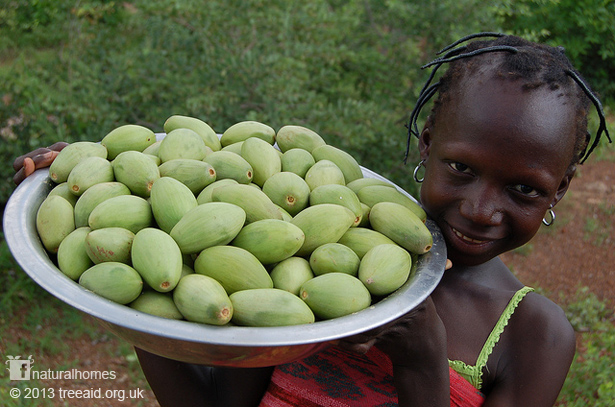 |
|
| |
|
A Shea Tree, Burkina Faso |
 |
|
|
|
| |
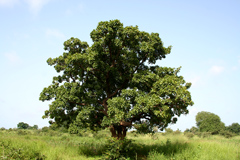 |
|
The Shea tree grows in west and central Africa. It's usually women and
children that harvest, process and sell shea products providing
financial independence. With a high market value and uses in cooking and
cosmetics, Shea butter has become known as Burkina Faso's gold where
over 50% of the population is involved in its production. By
selling fruits, seeds, nuts and leaves, women and children earn
their own income. |
|
| |
|
|
|
|
|
| |
|
Shea kernels |
 |
|
|
|
| |
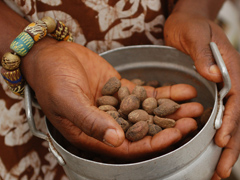 |
|
|
|
Shea butter, which is used as an ingredient in
many natural cosmetics, comes from the kernel of the tree's fruit.
For women in poor rural communities making and selling shea butter
and shea soaps can provide a pathway
out of poverty.
The shea fruit seeds are boiled
making the shell easier to break, and
then dried in the sun. The shell is removed and used for fuel
leaving the kernel (left) to be crushed, roasted and ground
into a paste (right). |
|
|
|
| |
|
|
|
|
|
| |
|
A dra, a small round houses |
 |
|
|
|
| |
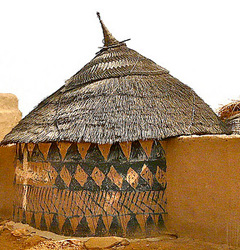 |
|
|
|
The shea paste is then churned by hand for about two hours to
extract the shea butter
which is skimmed off, washed and cooled for sale in markets. You
can watch the whole process in this video by
Green People.
| |
|
|
|
| |
Women's Shea Butter Project in Ghana |
|
|
|
| |
|
Gurunsi woman selling shea
soap |
 |
|
|
|
| |
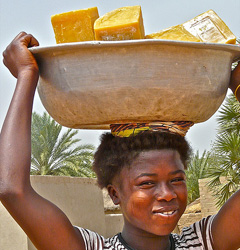 |
|
|
|
| |
|
|
|
|
|
| |
|
|
|
|
|
|
TREE
AID, who help villagers living in the drylands of Africa
use trees to reduce poverty and protect the
environment, train locals in the best
shea processing methods, and how to sell their shea products. You
can support the work of TREE AID by helping to
plant a shea tree. |
|